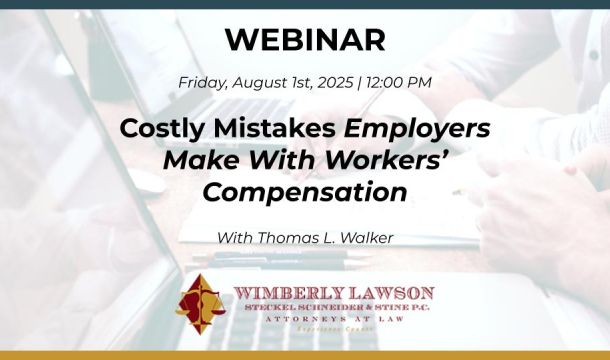EEOC Issues Updated Guidance on Retaliation
According to the EEOC, retaliation is the most frequently alleged basis of discrimination in all sectors, including the federal government workforce. In order to address the proliferation of retaliation claims, on August 25, 2016, the EEOC issued updated, EEOC Enforcement Guidance on Retaliation and Related Issues, superseding the previous guidance issued in 1998. This guidance explains the law on retaliation issues with concrete examples, where the Commission agrees with those interpretations. Where the lower courts have not consistently applied the law or the EEOC's interpretation of the law differs in some respect, this guidance sets forth the EEOC's position and explains its analysis. In other words, this new Guidance represents the EEOC's interpretation of Title VII retaliation law. It is not binding on the courts.
The various topics explained in the new guidance include:
•The scope of employee activity protected by the law;
•Legal analysis to be used to determine if evidence supports a claim of retaliation;
•Remedies available for retaliation;
•Rules against interference with the exercise of rights under the ADA;
•Detailed examples of employer actions that may constitute retaliation.
Retaliation occurs when an employer takes a materially adverse action because an individual has engaged in, or may engage in, protected activity. Protected activity includes "participating" in an EEO process or "opposing" discrimination. These two types of protected activity arise directly from two distinct statutory retaliation clauses that differ in scope. Participation in an EEO process is more narrowly defined to refer specifically to raising a claim, testifying, assisting or participating in any manner in an investigation, proceeding or hearing under the EEO laws, but it is very broadly protected. By contrast, opposition activity encompasses a broader range of activity by which an individual opposes any practice made unlawful by the EEO statutes.
The protection for opposition is limited, however, to those individuals who act with a reasonable good faith belief that a potential EEO violation exists and who act in a reasonable manner to oppose it. That means that the violation that the employee complains about does not have to have merit, the employee must simply have a "reasonable good faith belief" that a violation occurred. For example, if an employee complains that he or she is being sexually harassed, and the employer conducts an investigation and determines that harassment did not occur, the complaining employee is still protected from retaliation as long as he or she had a reasonable good faith belief that harassment occurred. As a practical matter, this means that an employer cannot punish an employee for making an unsupported complaint of harassment (or discrimination) unless the employer has strong evidence that the employee knew that the complaint was false when he or she made it.
While the Guidance does not have the force of law, it does show how the EEOC will approach retaliation claims. Not surprisingly, the EEOC takes an expansive view of each of the elements of those claims.

Kathleen J. Jennings is a former principal in the Atlanta office of Wimberly, Lawson, Steckel, Schneider, & Stine, P.C. She defends employers in employment matters, such as sexual harassment, discrimination, Wage and Hour, OSHA, restrictive covenants, and other employment litigation and provides training and counseling to employers in employment matters.
Related Content
Get Email Updates
Recent Content

How to Audit Employment Discrimination Laws Compliance

TPS Update (As of 6/17/2025)

TPS Designation for Honduras and Nicaragua Automatically Extended, But the Date is Uncertain

President Trump Discourages Criminal Enforcement of Agency Rules

Supreme Court Suggests Trump Can Fire Agency Heads without Cause
